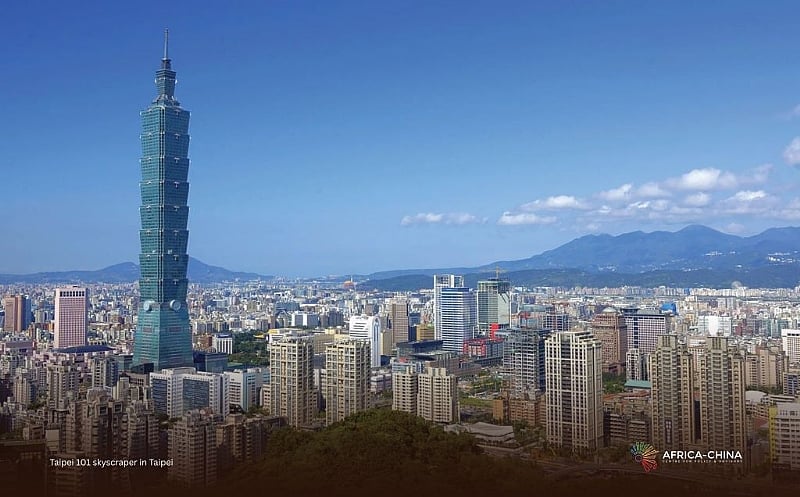As the world commemorates the 80th anniversary of the victory of the World Anti-Fascist War in 2025, China is also marking a parallel milestone—the 80th anniversary of the recovery of Taiwan. These twin anniversaries offer a moment of historical reflection and geopolitical reckoning, particularly as Beijing reasserts its long-held stance on Taiwan through the 2022 white paper titled “The Taiwan Question and China’s Reunification in the New Era”.
The white paper, issued by the Taiwan Affairs Office of the State Council and the State Council Information Office, builds on previous iterations in 1993 and 2000. It outlines China’s unambiguous position: that Taiwan has been an inseparable part of China’s territory since ancient times and that national reunification is a historical mission tied to the rejuvenation of the Chinese nation.
A Historical Claim Rooted in Pain and Recovery
China’s narrative begins with a painful rupture. In April 1895, after its defeat in the Japanese invasion, the Qing government was forced to sign the Treaty of Shimonoseki, ceding Taiwan and the Penghu Islands to Japan. For Beijing, this marked not just a territorial loss, but a national humiliation—one of many during what China often calls its “Century of Humiliation.”
The tide turned during World War II. The 1943 Cairo Declaration, issued by China, the United States, and the United Kingdom, explicitly stated that “all the territories Japan has stolen from the Chinese, such as Manchuria, Formosa [Taiwan], and the Pescadores [Penghu Islands], shall be restored to the Republic of China.” This was reaffirmed in the Potsdam Proclamation of 1945, which called for Japan’s unconditional surrender and the implementation of the Cairo Declaration. Upon Japan’s defeat, Taiwan was placed under Chinese administrative control.
Beijing considers 1945—the year of both the Allied victory and Taiwan’s recovery—a historical turning point that underscores its legal and moral claim to the island. Thus, the 2025 anniversaries serve not only as a remembrance of past victories but also as a reassertion of territorial integrity.
UN Resolution 2758: The Legal Mandate
Further solidifying China’s claim was United Nations General Assembly Resolution 2758, passed in 1971. This resolution recognized the People’s Republic of China (PRC) as “the only legitimate representative of China to the United Nations,” effectively replacing the“Republic of China (ROC) government” in Taipei.
China interprets this resolution as an international endorsement of its “One China” principle—a framework which asserts that there is only one China and that Taiwan is an integral part of it. According to the 2022 white paper, this recognition “completely resolved the issue of China’s representation in the United Nations” and left “no room whatsoever for the so-called ‘two Chinas’ or ‘one China, one Taiwan.’”
Although some countries maintain unofficial relations with Taiwan, the vast majority—including all permanent members of the UN Security Council—formally acknowledge Beijing’s position.
Peaceful Reunification in a “New Era”
The 2022 white paper introduces a more future-oriented framing, linking Taiwan’s reunification with what Chinese President Xi Jinping has described as the “great rejuvenation of the Chinese nation.” In this context, national reunification is not merely a geopolitical goal but a civilizational imperative.
The document reiterates a preference for peaceful reunification under the “One Country, Two Systems” framework, similar to the models applied in Hong Kong and Macau. It pledges post-reunification autonomy for Taiwan in areas such as governance, economic affairs, and cultural expression.
Strategic Timing and Global Relevance
The timing of this white paper is significant. Released in August 2022 amid rising tensions in the Taiwan Strait and high-profile visits by Western officials to Taipei, it signals Beijing’s intent to reframe the discourse and remind the world of the legal, historical, and moral foundations of its claim.
The dual anniversaries in 2025 are likely to amplify Beijing’s message. They provide a narrative stretching from colonial subjugation to national revival—a journey that, in China’s view, remains incomplete without the full reunification of Taiwan.
Conclusion: Towards a Shared Future?
China’s message is clear: reunification is not a question of if, but when and how. As articulated in the 2022 white paper, the path forward must be grounded in historical truths, international law, and the enduring principle of national sovereignty.
Yet the global context has changed. Taiwan now occupies a unique role in global supply chains, and regional security, or insecurity. Any future engagement on the Taiwan question will require not just historical understanding, but diplomatic creativity and political restraint.
The challenge—and opportunity—for the international community is to engage constructively with China’s vision while upholding peace, stability, and the principles of international cooperation.
About Author:
Paul Frimpong
Executive Director, ACCPA


